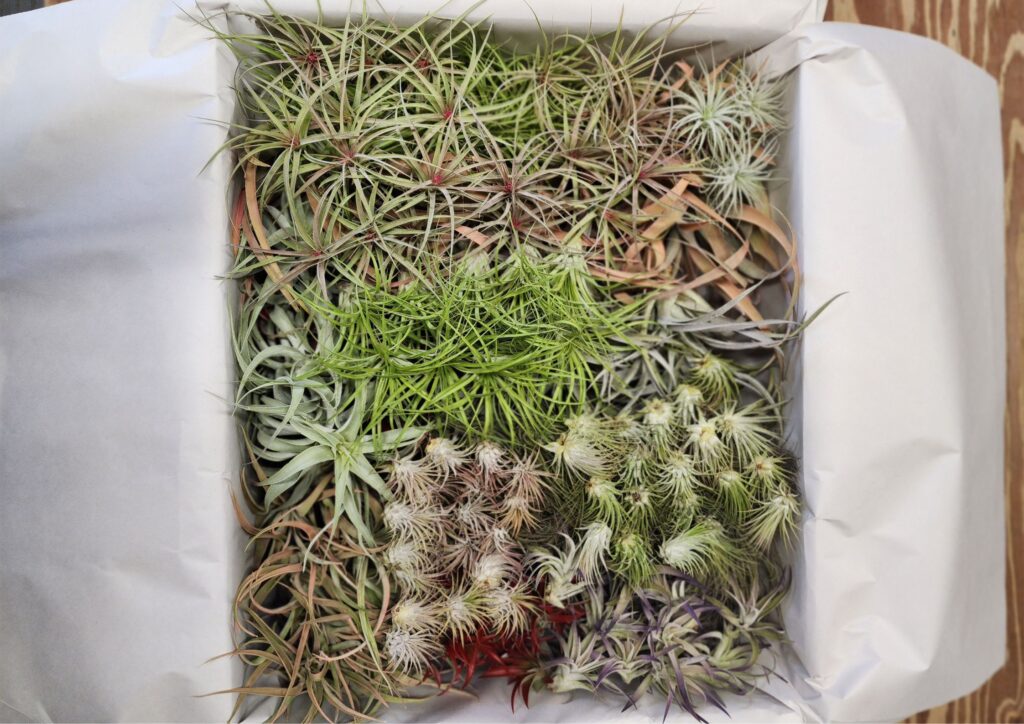
CARE IMMEDIATELY AFTER SHIPPING
Remember that air plants are living things that, although hardy and resilient, will be put through some strain during the shipping process. They may look poor after being in a dark box for over a week – some species will look worse off than others.
- But this is temporary!
To remedy this:
- Give the plants a very good watering so that the whole plant gets soaked.
- Gently shake excess water from the plants
- Then ensure the plants are in a well-ventilated area so that they can dry within 1-2 hours; a fan can help with this
- Place the plants in a bright area with indirect sunlight and good air circulation
- Thereafter, get on a regular schedule of misting 1-2x / week with a spray bottle; do not overwater!
Your air plants should recover within a few days to a week, provided you follow the continued care instructions below.
NOTE: If you think there is a serious issue with your products after you receive and open your box(es), please let us know as soon as possible.
Toll Free: 800-832-5632
Tel: 407-656-5541
Email: [email protected]
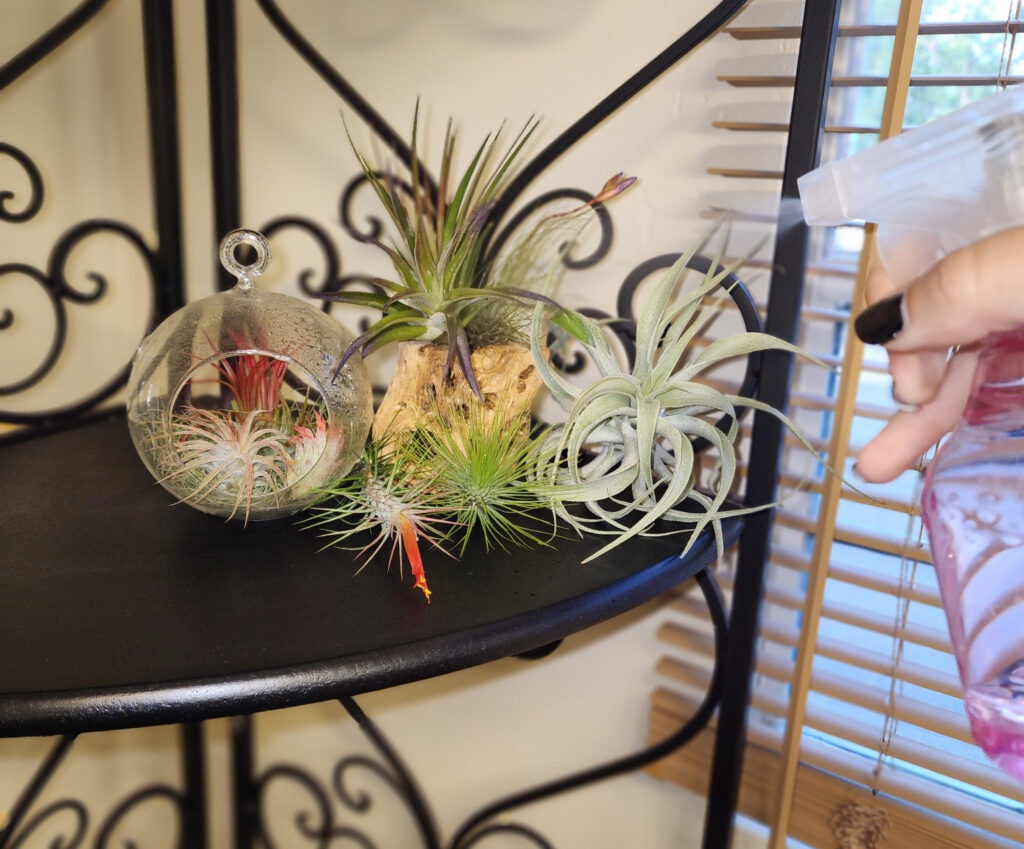
Indoor Care
Tillandsia in the home, office, or other indoor facility must receive enough bright light (filtered sunlight) for a healthy plant. The ideal location is near a window that admits natural light, taking care it is not exposed to direct sunlight during the hotter times of the year (Tillandsia species with softer leaves are more susceptible). In place of this, a broad-spectrum fluorescent light is recommended.
Outdoor care
Air plants thrive in outdoor environments. Hanging from under a tree canopy or placed in a covered screened patio with access to natural, bright filtered sunlight provides just the right environment air plants love. Avoid direct sunlight, especially in the summer, which can burn and kill the plants.
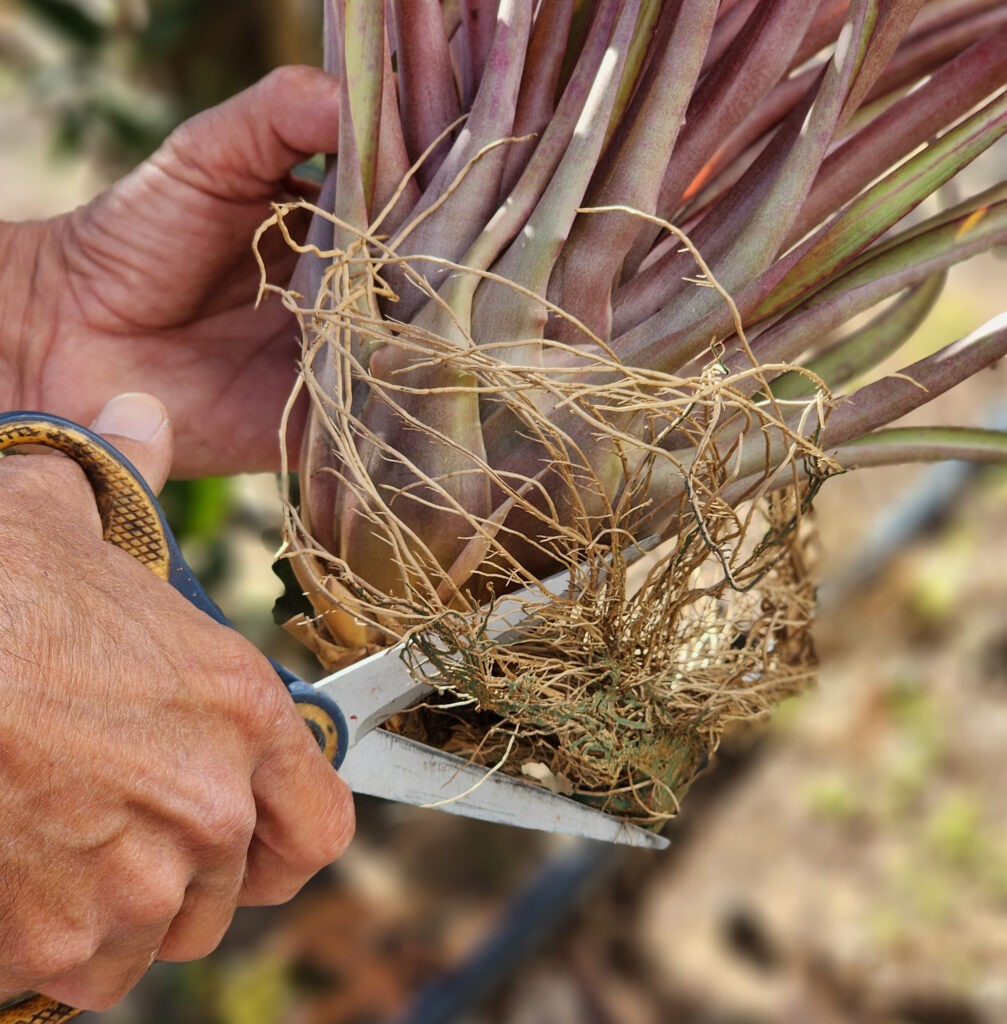
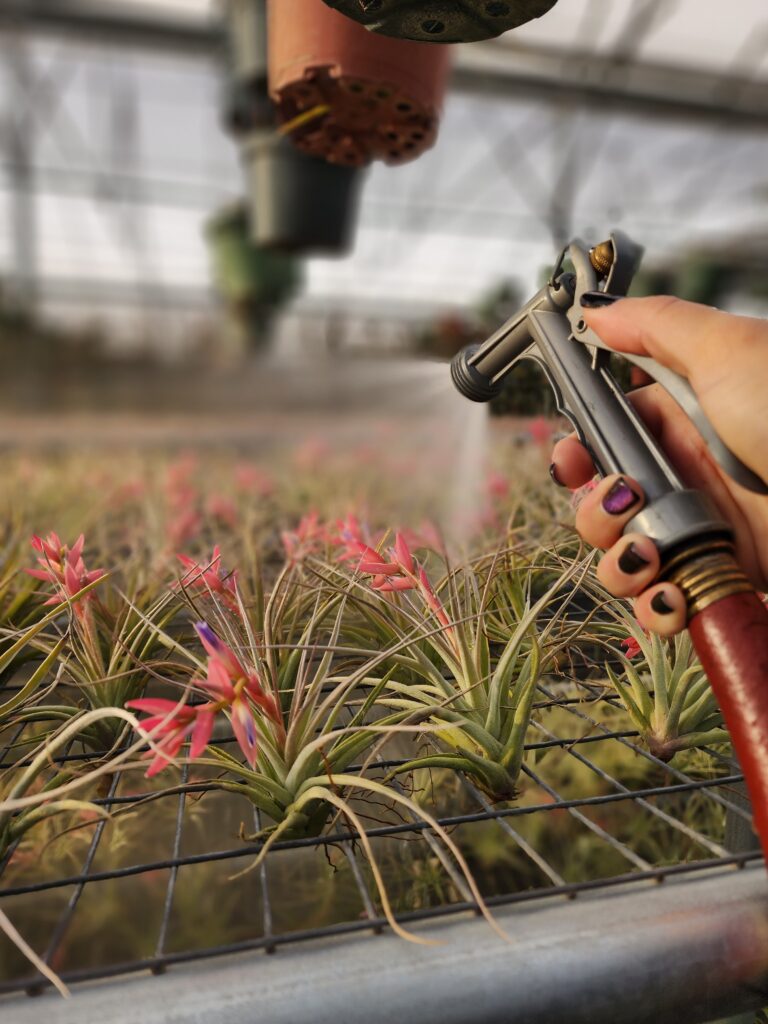
Watering
The ideal watering schedule is 1-2 times a week, depending on how dry or humid their environment is. This also depends on the species of Tillandsia: air plants that have a greener color originate and flourish in “mesic” habitats that are moist, such as rainforests and jungles, while those that are silvery to near-white in color have adapted to “xeric” habitats that are drier, such as arid mountainsides and deserts. Be careful not to over-water the plants.
Air plants absorb water and nutrients through their foliage, so ensure to water these areas and not the roots. Importantly, ensure that any excess water does not pool at or inside the base of the plant (you may gently shake this out if it happens) and that there is enough air circulation and light where the plants are situated so that any excess water on the plant may naturally evaporate within a couple of hours after watering. If air plants sit in water for too long, they will begin to rot and eventually die.
Dehydration will occur when the plant’s leaves begin to curl. Give the plants a very good watering so that the whole plant gets soaked. Then ensure the plants are in a well-ventilated area so that they can dry within 1-2 hours.
Temperature
Air plants are very tolerant of a wide range of temperatures. The ideal temperature is between 70°-80° F (21°-27° C). However, Tillandsia will do quite well at temperatures between 90°-100° F (32°-38° C) with increased water, air circulation, and shade. In terms of the cold, most species can withstand near-freezing temperatures, but avoid this whenever possible. Freezing temperatures will kill any tillandsia. Certain species begin to get foliage damage when exposed to temperatures below 50°F.
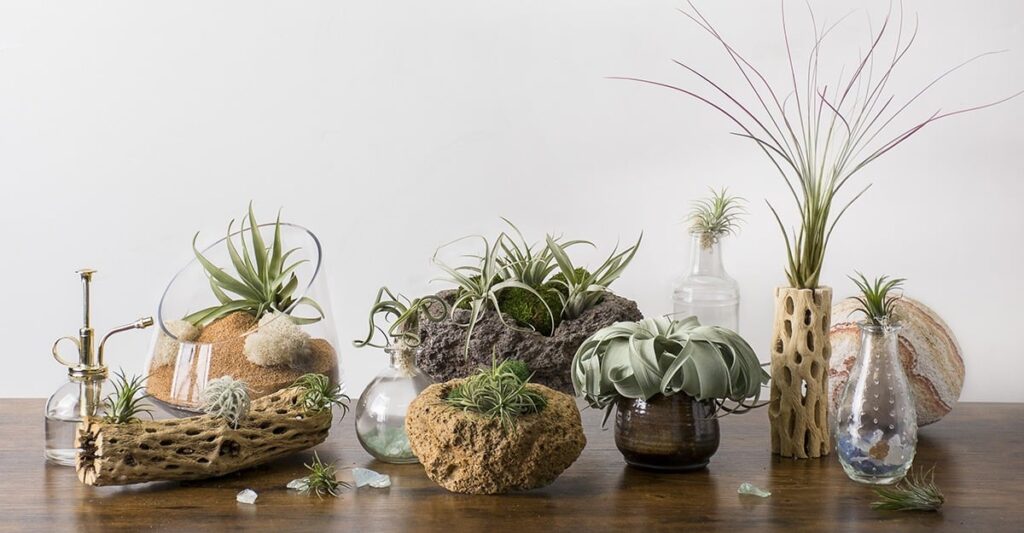
Fertilization
Fertilize once a month through the air plants’ foliage. Any liquid or water-soluble plant food that is low in copper is recommended (high amounts of copper are toxic to bromeliads). Dilute to one-quarter strength. While having a monthly fertilizer routine is not essential for the plant’s survival, it will boost the plant’s growth, color, and bud. As with watering, be careful to avoid over-fertilization.
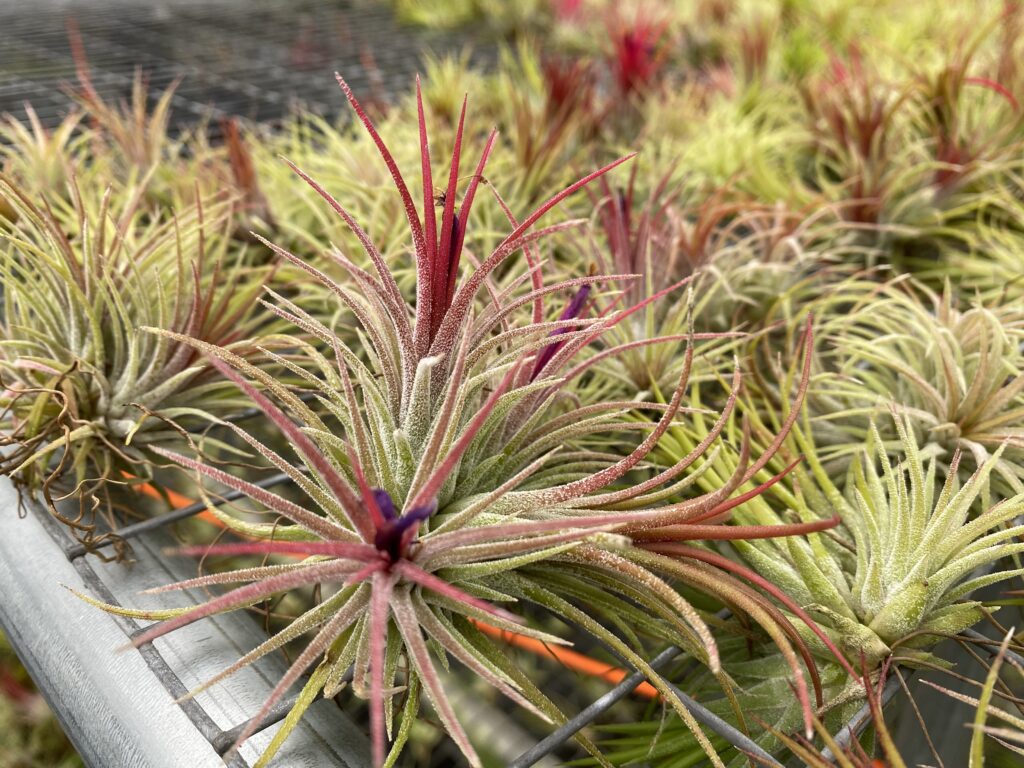
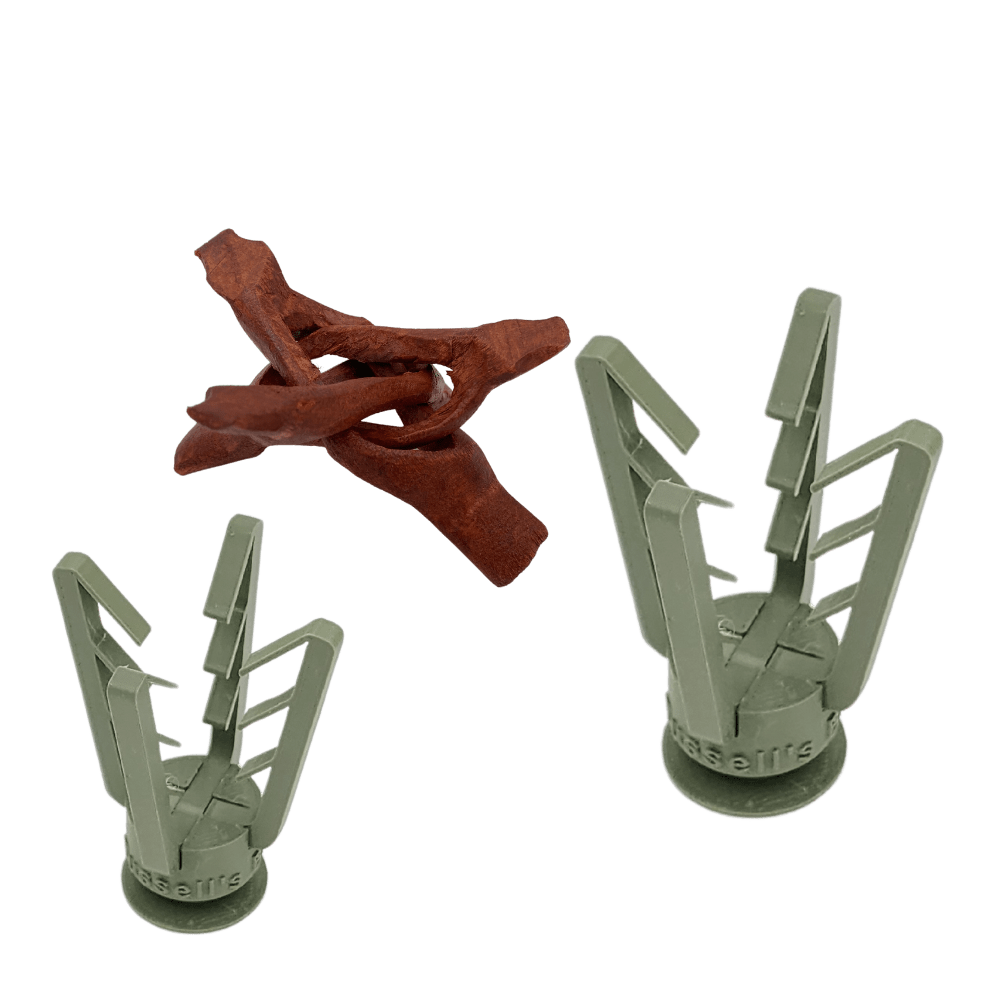
Mounting
Air plants tend to grow in colonies or clusters. Many look great just hanging on their own without any mounting or accessories. Since most tillandsia are epiphytic, the possibilities of mounting media are almost endless. Some mounting suggestions are grape wood, drift wood, tree limbs/stumps, cork, clay pottery, rock, or stones. Refer to our Finished Products section for a list of mounting materials we offer, as well as some popular, decorative pieces we make in-house.
A few things to consider when selecting your mounting media:
- Be sure it does not hold water (if an air plant sits in water, this will cause root rot and eventual death); drill a hole in the wood for complete drainage
- Adhesives may be used for securing the plants onto the media, such as E6000, low-temperature hot glue, or Liquid Nails. We recommend E6000 because it is colorless, strong, water-proof, and most importantly non-toxic
- Eventually, the tillandsia will attach roots and anchor to the mount.
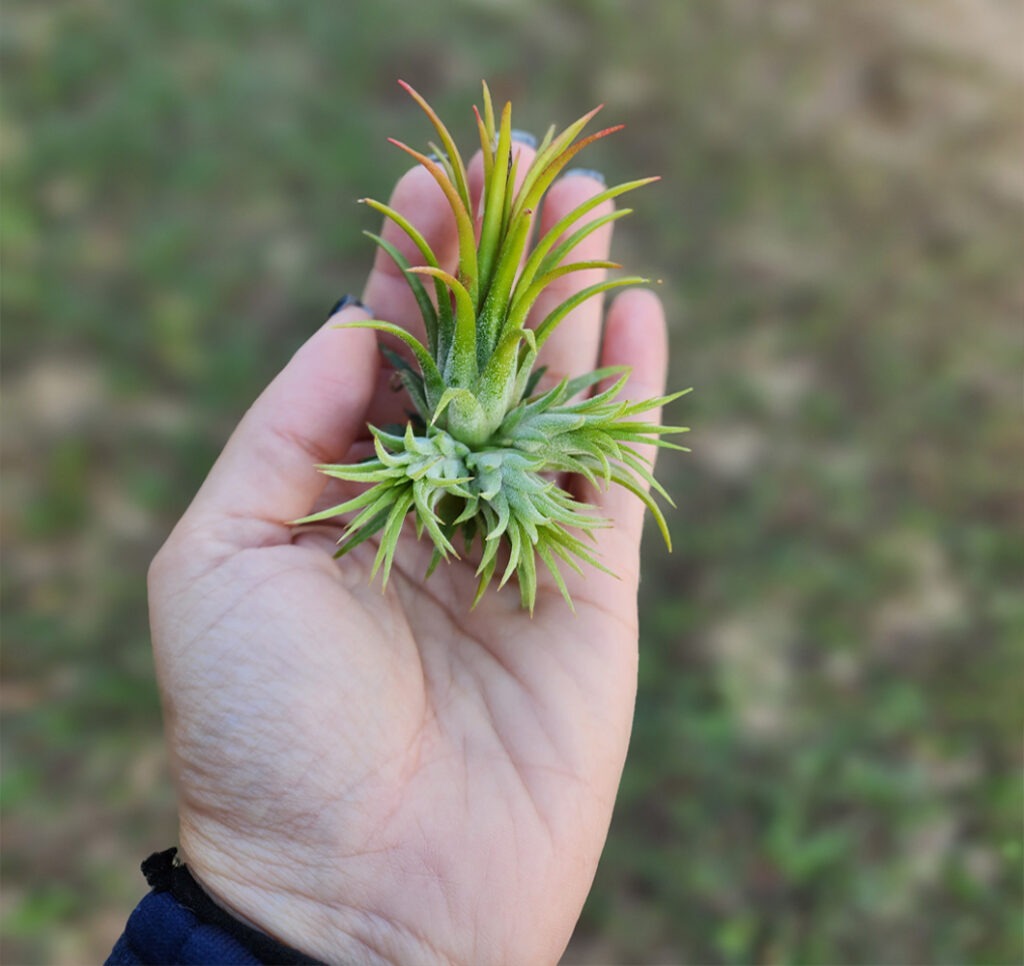
Reproduction
Tillandsia reproduce by offsets (pups) or by seed. Many send up pups from the base or between the leaves of the mother plant. This is one characteristic that endears tillandsia to plant enthusiasts. In some air plants, it is not unusual to see anywhere from 4 to 8 offsets appearing before, during, or after the bloom of the mother plant. Young plants can be separated from the mother when they are a third to half of the mother’s size.
Reproduction by seed is a rewarding process, however, the growing of the seedling can be very slow, taking years before the young plant matures.
Parting thoughts
Given that the exact condition in every environment varies – ambient temperature and season changes; humidity levels; indoor vs. outdoor positioning; amount of light and airflow – as well as the fact that different tillandsia species have adapted to handle very different natural habitats, it’s best to see how your air plants behave in your environment and adjust our guidelines accordingly.
